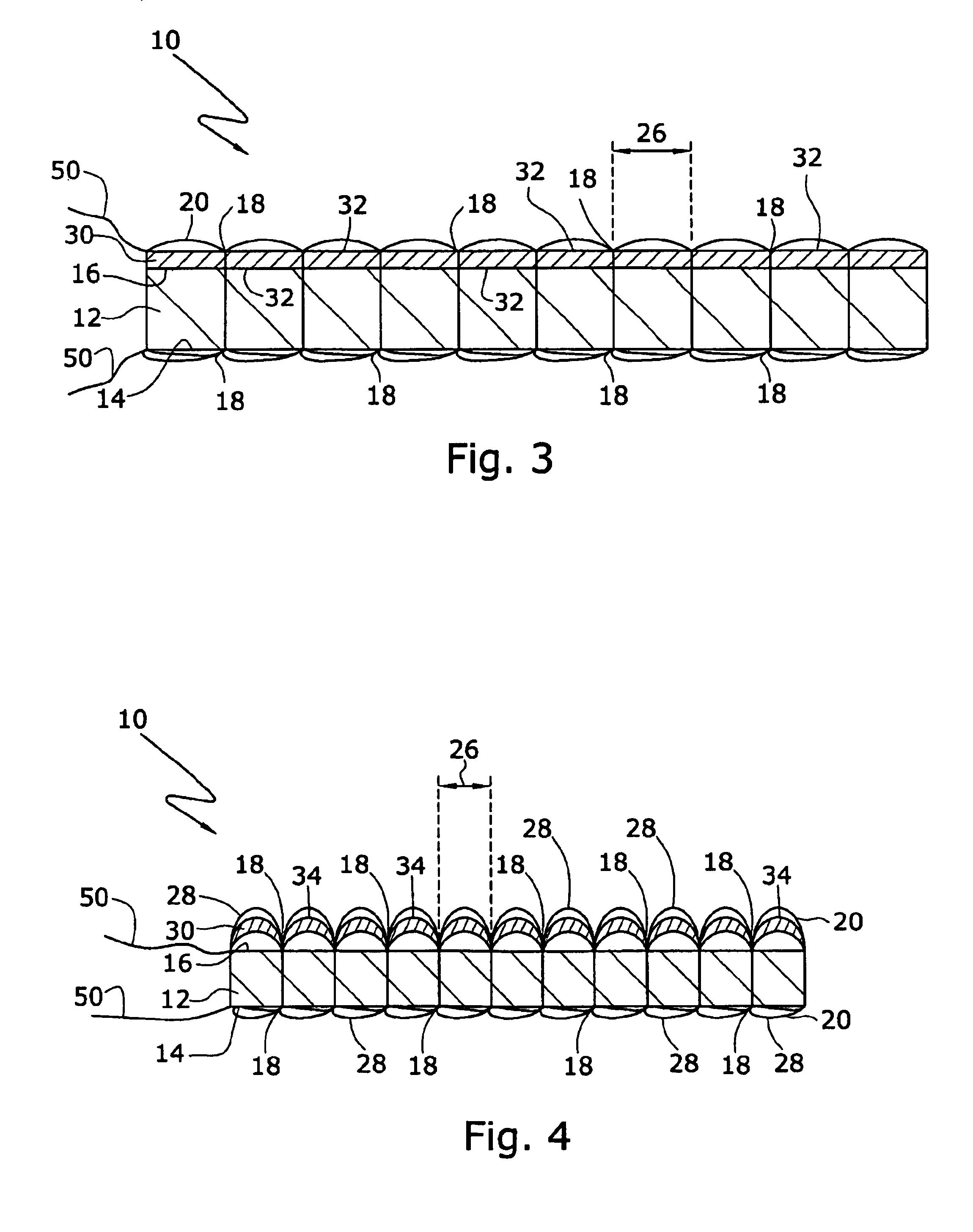Stitch-bonded and gathered composites
a technology of gathered composite fabrics and stitch-bonded fabrics, which is applied in the direction of sewing stitches, knitting, knotting, etc., can solve the problems of substantial inelasticity of the shrink layer, and achieve the effect of enhancing the dimensional stability of the composi
- Summary
- Abstract
- Description
- Claims
- Application Information
AI Technical Summary
Benefits of technology
Problems solved by technology
Method used
Image
Examples
example 1
[0043]A composite was prepared having a shrinkable adhesive layer made from a commercial polyethylene film having a thickness of about 5.5 mils. This adhesive layer shrinks by a factor of about 2.1 / 1 in the machine direction and by a factor of about 1.2 / 1 in the cross direction when heated to approximately 135° C. for about 10 seconds. When cooled, the adhesive layer “freezes” in its shrunken dimensions, and has a surface area that is equal to approximately 40% of the original surface area and a thickness of about 14 mils. The shrunken sheet stretches less than about 20%, typically about 3% to about 10%, when an 8 inch long and 1 inch wide strip is pulled with a force of 5 lbs.
[0044]The adhesive layer is stitch-bonded with 14 gauge stitch-bonding machine using 18 stitches per inch (cpi) from two bars. The front bar carries commercial, flat 150 denier dull polyester yarns, one yarn per guide stitching a tricot stitch 1,0 / 1,2, and the back bar carries a 220 denier flat bright polyeste...
example 2
[0046]Example 1 is repeated with the addition of a layer of Sontara® Style 8034 polyester nonwoven of about 21 gm / m2 weight placed over the shrinkable adhesive layer facing the technical back of the stitched fabric. The adhesive layer is not visible as stitched. Shrinkage and performance are similar to those of Example 1 with the exception that the surface on the technical back is more textile like and richer.
example 3
[0047]Example 1 is repeated with the exception that the front stitching bar carries textured nylon 280 denier / 68 filaments. The stitch-bonded product is heated to 110° C. using hot air or steam. No shrinkage occurs as in Example 1, but the textured nylon yarns develop a slight crimp. When the temperature is raised to 135° C. the product shrinks in an identical manner to example 1. The loops formed by the flat 220 denier polyester from the back bar appear identical to those in Example 1. The loops formed from the front textured nylon bar are less tall than those in Example 1 and these loops have a helical texture.
[0048]“In accordance to another embodiment of the present invention, the layer 12' is a shrinkable but non-adhesive layer. Second adhesive layer 80 can be applied to the shrinkable layer 12' before, during or after the stitching process, and before, during or after the gathering process, as illustrated in FIGS. 5-10. FIG. 5 shows second adhesive layer 80 stitch-bonded along ...
PUM
| Property | Measurement | Unit |
|---|---|---|
| height | aaaaa | aaaaa |
| height | aaaaa | aaaaa |
| length | aaaaa | aaaaa |
Abstract
Description
Claims
Application Information
 Login to View More
Login to View More - R&D
- Intellectual Property
- Life Sciences
- Materials
- Tech Scout
- Unparalleled Data Quality
- Higher Quality Content
- 60% Fewer Hallucinations
Browse by: Latest US Patents, China's latest patents, Technical Efficacy Thesaurus, Application Domain, Technology Topic, Popular Technical Reports.
© 2025 PatSnap. All rights reserved.Legal|Privacy policy|Modern Slavery Act Transparency Statement|Sitemap|About US| Contact US: help@patsnap.com



